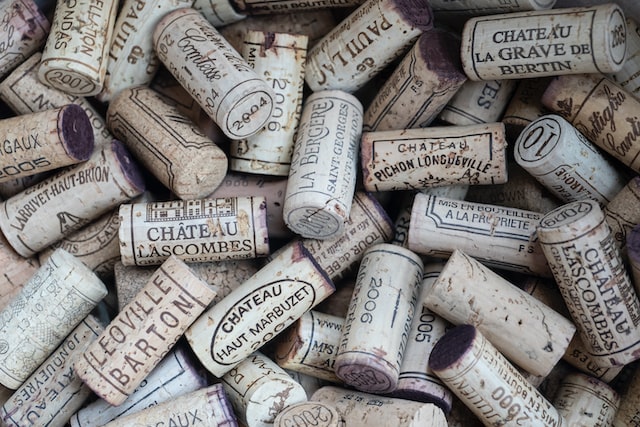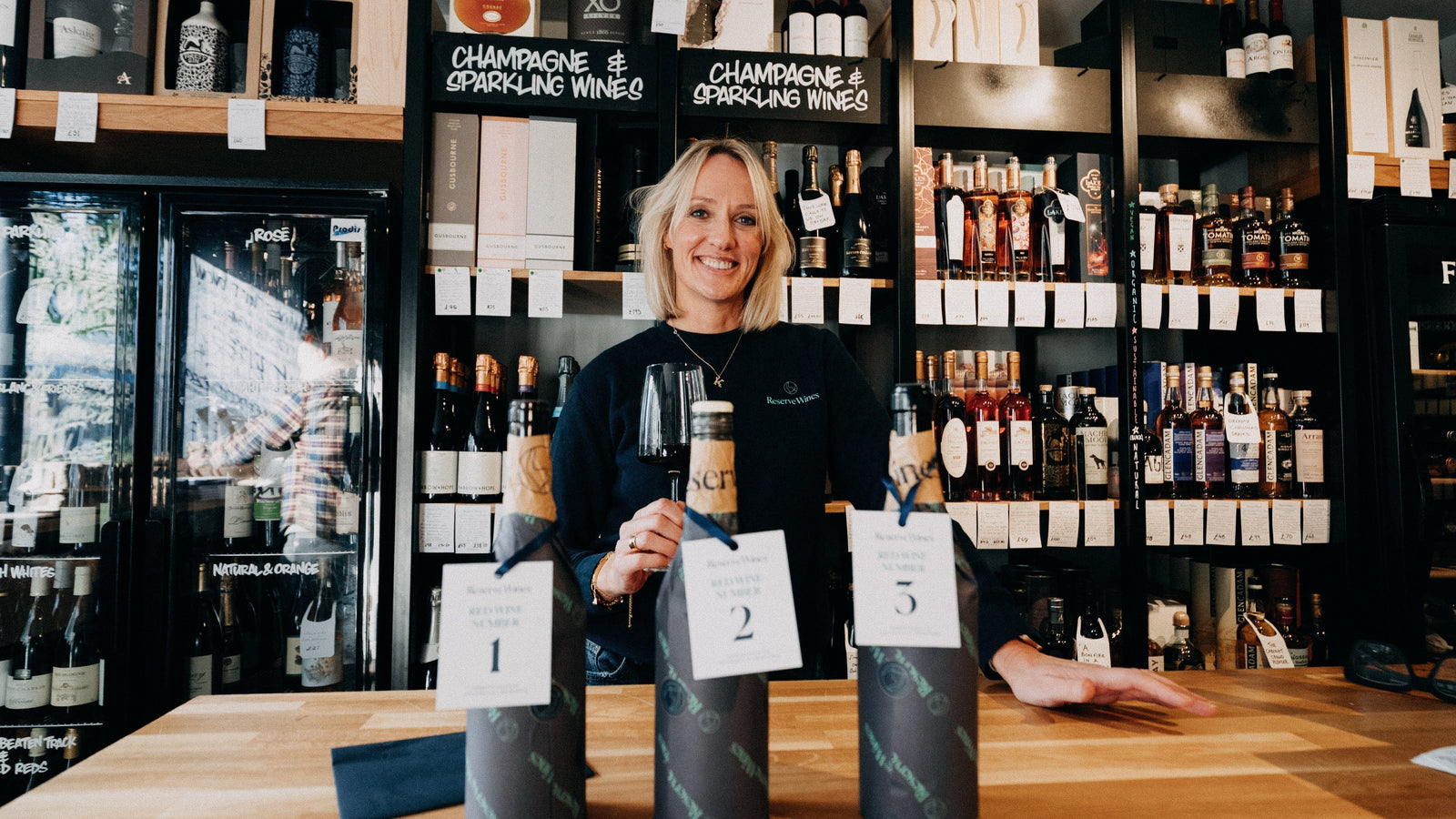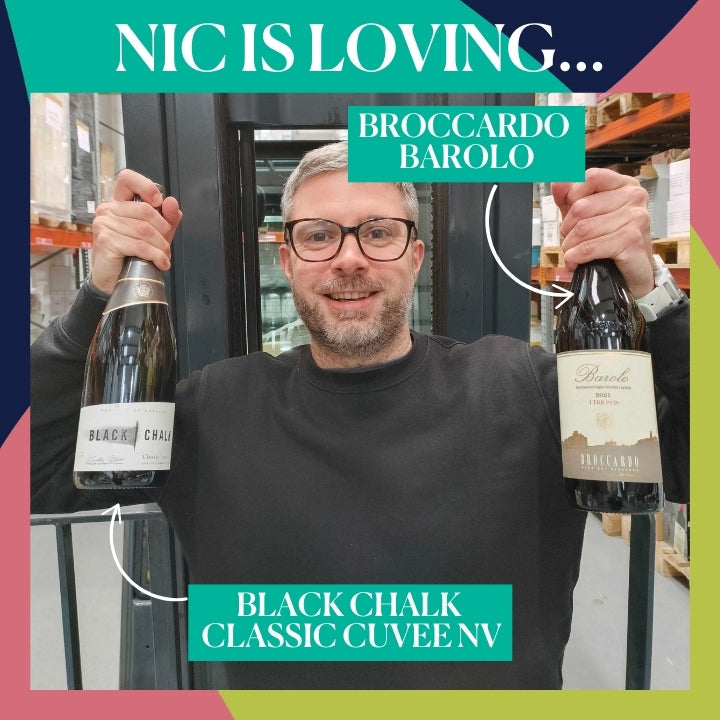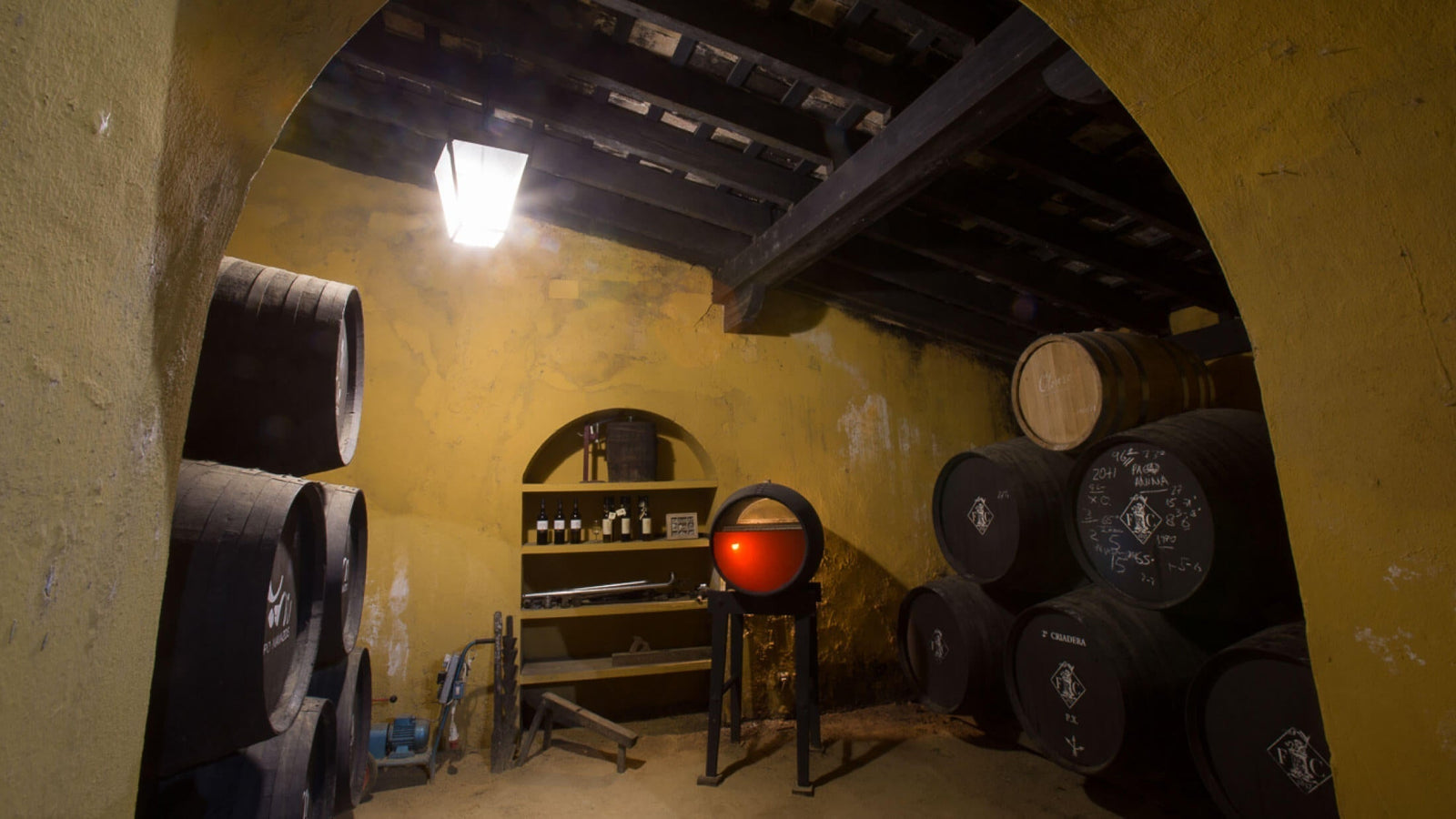The Wines of France
France is home to many of the world's greatest wines. It is among the largest wine producing countries, second only to Italy in terms of how much juice they ferment. There are wine regions all over France producing wines of all styles, making it possible to find something to enjoy no matter what your taste.
The most well-known grape varieties are all from here: Cabernet Sauvignon, Pinot Noir, Chardonnay are noble varieties from France that are grown all over the world.
In 1935, France introduced the Appellation d'origine contrôllée (AOC) system. This formed a set of rules that governed what grapes could be grown in certain areas, as well as how the wine should be made if the winemaker wanted to use the name of AOC on the label. It also means that you don't generally see the grape varieties named on the label. This is one of the factors that can make French wine more challenging for people just beginning to take an interest in wine.
Outside of the AOCs, a wine of a good quality from a distinct area can be labelled Indication Géographique Protégée (IGP) and you'll see this on wines from the South of France such as Languedoc-Roussillon. These wines are permitted to say what grapes are used on the label and can be a good place to start exploring French wine as they are often good value too.
The basic classification of wine made in France is simply labelled Vin de France. This is often simple, uncomplicated wine for everyday drinking.
There are wine regions all over France, we're going to focus on the 5 largest AOCs.
Bordeaux
Bordeaux is one of the largest wine producing regions and home to some of the most iconic French red wine in the world. If you hear someone refer to Claret, they're talking about Bordeaux. The area, in southwest France, is divided by the Gironde River.
The left bank of the river is home to Médoc where wines are made predominantly with Cabernet Sauvignon blended with Merlot. These wines have blackcurrant fruit, cedar oak flavour, herbal notes and strong tannins. The right bank is where you'll find Merlot-led blends from Appellations such as Pomerol and Saint-Emilion. Here wines are slightly softer with plummy fruit, some oak influence and dry tannins.
The most famous Chateaus may be from these areas, but much of the Bordeaux wine we drink is from lesser-known appellations that offer good value for money.
The white wines of Bordeaux are blends of Sauvignon Blanc and Sémillon usually aged in barrels. The whites are made in much smaller quantities than the red wines.
Bordeaux also produces a world class sweet wine in the appellation of Sauternes. This wine is made from grapes that have been affected by a fungus called botrytis. This causes the grapes to shrivel and concentrates their sugars resulting in lusciously sweet wines with great complexity and ageing potential.
Key Grape Varieties:
Merlot - wines made with this grape can be a great option for an easy drinking wine. You will find it in lots of wines from Bordeaux, but look to Chile if you’re after something juicy & fruity.
Cabernet Sauvignon - one of the world's most recognised red wine grapes and is grown in a variety of different climates. It tends to produce full bodied wines with high tannins and an acidity which adds to the wine’s aging potential.
Sauvignon Blanc - most likely the UK's favourite grape variety, in cooler areas like Bordeaux, it produces flavours of gooseberry, cut grass and citrus. It becomes more tropical in warmer areas such as Marlborough in New Zealand.
Sémillon - Often paired with Sauvignon Blanc in dry blends in Bordeaux where it adds a bit of lemony fruit, beeswax and chamomile. It becomes the star in the sweet wines.
Where to start: Chateau Puybarbe, Cotes de Bourg 'Gaia'
The house style from Chateau Puybarbe in the Cotes de Bourg. Gaia is a fruit forward Merlot dominant blend. No oak ageing here produces a wine full of ripe blackcurrant and roasted coffee. Medium bodied and with fine tannins, it's the perfect claret to drink young and pairs with a range of poultry such as duck or roast chicken.
Burgundy
This area situated between Dijon and Lyon is dominated by Pinot Noir and Chardonnay grapes. Land here is at a premium and the best vineyard sites are split between many small winemakers whose estates are called Domains. The soils are rich with limestone which contributes to the wine's minerality.

Chablis is the most northerly appellation, close to Champagne, and is famous for lean, unoaked Chardonnay that is very pure and crisp. French White wine from Chablis is among the most widely known and appreciated in world.
In the north of the region, you'll find the Côte d'Or where many of the best vineyards are located. Pinot Noir is the star grape here, creating elegant wines with delicate fruit, soft tannins and high acidity.
The wines are expensive. The high demand and land prices due to the small area of vineyards have driven up prices. The vineyards are much smaller than in Bordeaux and even the basic wines are now surprisingly costly, but there is still relatively good value to be found in some areas of Burgundy.
The most well-known and iconic villages can be found in the Côte-de-Nuits. Here the wines of Vosne-Romanée, Nuit St George and Gevrey Chambertin are among those with Grand Cru status and whose wines command the highest prices.
To the south, the Côte-de-Beaune is known for Pinot Noir with a little more concentration from Pommard and the delicate wines of Volnay but also fine white wines made with Chardonnay that are rich and full-bodied from villages like Meursault and Puligny-Montrachet. The wines here are barrel fermented and aged on their lees (yeast.)
Further south the Côte Chalonnaise can offer some excellent value wines from less prestigious villages where talented winemakers can really make a mark. There's some more affordable rustic Pinot Noir and smooth Chardonnay from the villages of Mercurey, Givry and Montagny.
The Macônnais is the most southerly region with the warmest climate and the largest source of good value Chardonnay. The top wines here are from the appellations of Vire-Clessé and Pouilly-Fuissé and there's also a lot of Bourgogne Blanc (Chardonnay) from the surrounding area.
Key Grape Varieties:
Pinot Noir - a thin skinned variety that can be tricky to grow. It suits cooler areas and produces delicately fragrant, subtly complex wines with flavours of cherry, raspberry and some savoury spice. It has less tannins than other red wines and high acidity.
Chardonnay - one of the most versatile grapes in the world, Chardonnay can be citrusy & lean but also rich, buttery & full bodied depending on how the winemaker uses it.
Where to start: Domaine Fournillon, Chablis
Exactly what you'd expect from good value Chablis. This is Chardonnay at its lightest and freshest, with lots of green apple and citrus, lean minerality and a refreshing finish. A great wine to pair with smoked salmon and poached eggs - because who doesn't love a boozy brunch?
Rhône Valley
The Rhône Valley is in the South East of France and follows the Rhône river as it flows from the Alps all the way down to the Mediterranean sea. This area has a long history of wine and is divided into two distinct areas.
The Northern Rhône is known for rich, full-bodied savoury reds with a lot of finesse made using the Syrah grape. The area is small when compared to the Southern Rhône and the vineyards are on steep hillsides to maximise the sun exposure as they have hot summers and cold winters. The iconic wine of this area comes from the tiny appellation of Hermitage. The wines here are highly sought after and expensive. They are round, full-bodied reds full of character that need years of ageing to show their best. Crozes-Hermitage is the biggest area here, in the shadow of the more famous neighbour, and produces more accessible Syrah-based wines as well as aromatic, herbaceous whites made from Marsanne and Roussane grapes.
The Southern Rhône is more open and has a more Mediterranean climate with long warm summers and mild winters. There is a cooling influence of the 'Mistral' wind that blows through the valley. The most famous appellation here is Chateauneuf-Du-Pape (The Pope's New Castle) which can be made with up to 14 different grape varieties. The main ones are Grenache, Syrah, Cinsault and Mourvedre and they create big wines with lots of spicy dark fruits.
Beyond this there are many great quality Villages that also produce Grenache dominated blends, such as Lirac, but the majority of production falls under the wider Cotes-du-Rhone AOC where you can pick good value, juicy wines.
Key Grape Varieties:
Syrah - is also known as Shiraz when grown in warmer areas and produces reds that are full of blackberry fruit, often with a peppery spiciness. It can range from medium-bodied to full-bodied with lots of tannin.
Grenache - this grape makes wines with lots of juicy strawberry, plum fruit and herby savouriness. It can be lower in tannin that Syrah, but often high in alcohol, adding body to wines.
Where to start: Un Bon Canon, Côtes du Rhone
This is a great introduction to the wines of the Rhône Valley. A blend of mostly Grenache with some Syrah, Cinsault and Clairette, this delivers ripe raspberry and plum fruit with a little toast and spice on a juicy, medium-bodied palate, as well as balancing acidity and fine tannins. Try this with lamb chops.

Loire Valley
This area is best known for the very dry, minerally Sauvignon Blanc from the appellations of Sancerre and Pouilly Fumé which are found in the Centre-Loire region at the exact centre point of France. It is cooler here, with warm summers and cold, snowy winters and it has chalky limestone soils.
The whole Loire area covers 600 miles and 4 distinct regions that each have their own style. The Lower Loire is the largest of these and it's where you'll find the appellation of Muscadet where the Melon de Blanc grape is used and wines are aged for 6 to 24 months on their lees (yeast) to give them a rounder feel. This complements the citrus minerality of these wines.
The Middle Loire is home to the appellations of Anjou, Vouvray, Saumur and Touraine and where the grapes Chenin Blanc and Cabernet Franc shine. This area is one of the warmest in the Loire. The Chenin Blancs are made in dry, sweet and sparkling styles and are full of baked apple, pear and beeswax notes. The Cabernet Franc are savoury medium bodied wines with fresh acidity and cedar notes.
Key Grape Varieties:
Sauvignon Blanc - The Loire is where the best Sauvignon Blanc is thought to be found. The cool climate produces fruity, minerally wines with lively acidity.
Chenin Blanc - this is a versatile grape that can offer dry wines with apple, pear and honeysuckle flavours but also sweeter wines with orange, ginger and honeycomb.
Cabernet Franc - this grape gives you flavours of raspberry, bramble and green pepper. Some say you notice woody aromas of pencil shavings in the aroma of the best examples. They are often medium bodied and have high acidity and tannins.
Melon de Bourgogne - you won't see this name on the label of many wines, but it is the Muscadet grape, and so worth mentioning.

Where to start: Domaine de la Bretonniere, Muscadet Sevre et Maine sur Lie
Kate Says: "One of my favourite wines at this price. I love Muscadet - you get fresh citrussy, appley wines. This one is Sur Lie which means it has a bit more body and creaminess from time spent on its yeast. Great with oysters and other shellfish."
Champagne
This area needs no introduction I'm sure. Champagne continues to be the choice to mark a celebration all over the world and only wine from this region is allowed to bear the name on its label. There are different types of producers operating here. The Maisons are the big Champagne houses who source their grapes from all over Champagne. There are co-operatives who work in specific villages with multiple growers, and there are Vignerons who are known as grower producers and are usually a single family operating in one place.
Wines are made from two red grapes (Pinot Noir and Pinot Meunier) and one white (Chardonnay) and are made using the traditional method of refermenting the wine in the bottle and ageing it. The producer then removes the spent yeast in process called disgorgement and rebottles it with a little dose of sweet concentrated grape must (essentially grape juice know as dosage) ready for release.
Non Vintage Champagne is aged for a minimum of 15 months, while vintage wines are aged for a minimum of 3 years.
Key Grape Varieties:
Pinot Noir - this red grape is used without any skin contact in Champagne so the juice is clear. Champagne made with only red grapes is called Blanc de Noir and often has subtle red fruit and lots of depth of flavour
Chardonnay - Champagne made with only Chardonnay is called Blanc de Blanc and often has more lemon and apple fruit and richness.
Pinot Meunier - A red grape not used much outside of Champagne, this adds fruitiness to a blend and is sometimes used as the dominant grape, but rarely on its own.

Where to start: Champagne Lete-Vautrain, Cote 204 Brut NV
Kate Says: "We love working with smaller Champagne producers. You get so much more for your money and this is a superb example. The apple and apricot fruit is bright and fresh. It’s complex and round. Gorgeous stuff."
How to Read a Wine Label
The French Appellation AOC system means that you often only find the name of appellation on the label - not the grape variety. Here's what you might find on typical label:

Wine Myth - Busted
Can you leave a spoon in a bottle of sparkling wine to keep it fizzy?
So there are times when you don't finish the whole bottle and you want to keep the wine fresh until the next day. If you're drinking a bottle of still wine with a cork you can try to push the cork back into the bottle. If it's a screwcap, even easier.
But if it's a sparkling wine with a traditional cork, that isn't an option. So what do you do? One idea that gets talked about is leaving the handle of a spoon in the neck of the bottle.
The theory behind this is the metal from the spoon helps to cool the air inside the bottle, which makes the air more dense. The denser air acts like a blanket on the surface of the wine and prevents the bubbles from escaping.
Does it work? Well, no. With no seal around the opening of the bottle, there is nothing stopping the pressure from escaping, so using a spoon is no better than using nothing.
To keep your bubbles in your bottle you should keep the bottle chilled and use a secure stopper.







Leave a comment (all fields required)